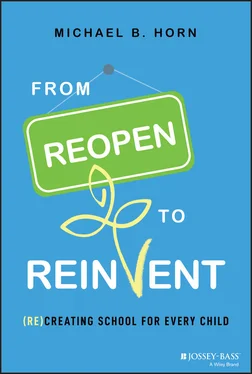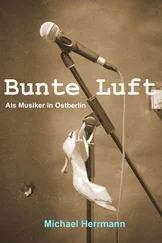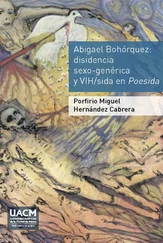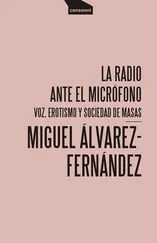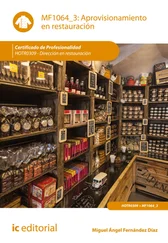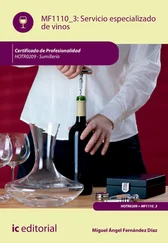Michael B. Horn - From Reopen to Reinvent
Здесь есть возможность читать онлайн «Michael B. Horn - From Reopen to Reinvent» — ознакомительный отрывок электронной книги совершенно бесплатно, а после прочтения отрывка купить полную версию. В некоторых случаях можно слушать аудио, скачать через торрент в формате fb2 и присутствует краткое содержание. Жанр: unrecognised, на английском языке. Описание произведения, (предисловие) а так же отзывы посетителей доступны на портале библиотеки ЛибКат.
- Название:From Reopen to Reinvent
- Автор:
- Жанр:
- Год:неизвестен
- ISBN:нет данных
- Рейтинг книги:4 / 5. Голосов: 1
-
Избранное:Добавить в избранное
- Отзывы:
-
Ваша оценка:
- 80
- 1
- 2
- 3
- 4
- 5
From Reopen to Reinvent: краткое содержание, описание и аннотация
Предлагаем к чтению аннотацию, описание, краткое содержание или предисловие (зависит от того, что написал сам автор книги «From Reopen to Reinvent»). Если вы не нашли необходимую информацию о книге — напишите в комментариях, мы постараемся отыскать её.
From Reopen to Reinvent,
From Reopen to Reinvent
From Reopen to Reinvent
From Reopen to Reinvent — читать онлайн ознакомительный отрывок
Ниже представлен текст книги, разбитый по страницам. Система сохранения места последней прочитанной страницы, позволяет с удобством читать онлайн бесплатно книгу «From Reopen to Reinvent», без необходимости каждый раз заново искать на чём Вы остановились. Поставьте закладку, и сможете в любой момент перейти на страницу, на которой закончили чтение.
Интервал:
Закладка:
The principals and central office staff even included a section on reimagining teaching and learning. In truth, however, Ball had always felt that that hadn't been the most urgent and immediate of their concerns—and the writing reflected that. There were a lot of buzz phrases about differentiation and equity but nothing concrete on how they would fulfill those aspirations .
The whole effort, though, had been nothing short of Herculean. To get back to normal. Whatever that was .
“Normal is good. Discuss,” she muttered .
Her phone buzzed. It was a calendar alert, but it prompted a different thought. In the months after the start of the pandemic, Ball remembered how hard it had been to get in touch with some families. It had actually always been tough, if she was being honest .
But then she remembered the day in early May when she and her team stopped trying to send long emails to every parent and guardian and instead she sent a couple short text messages to the parents. She remembered how Jeremy's mom, who had never come to any school events, had texted her back within minutes .
Ball found the conversation. “Thank you,” Jeremy's mom had texted her in June. “It was so nice to have heard from the school.”
But then when the district sent out the 70-page plan in the fall, Ball heard nothing from Jeremy's mom. Crickets .
Why was that? Ball felt like they had been building a rapport .
She struggled to think back. Her team had been so busy. No one had any time to reach out. And then the fights with parents began. Arguments over everything, and it was all hands on deck .
But never a peep from Jeremy's mom. Jeremy didn't return to in-person school until the year after that, sometime in November. What had happened all that time?
Ball decided to text Jeremy's mom, when, seemingly out of nowhere, Julia's parents startled her by knocking on her office door .
Now here were two parents from whom she had heard plenty. She blinked her eyes, straightened her jacket, and popped up from her desk wearing her biggest smile .
How was that for a transition?, she thought. The text would have to wait .
“Mr. and Mrs. Owens. It's so nice to see you again!”
* * *
In the wake of COVID-19 shattering the traditional routines and plans of so many schools nationwide, many understandably felt a great sense of loss. Their ways of life were under assault. The threat was clear.
In response, schools' priority was safety. District and school leaders—a group that I often shorten to “schools” or “school leaders” throughout the book for brevity and simplicity—focused on how to reopen schools by digging deep into the logistics and operations to figure out how to create safe, hygienic environments for students, teachers, and staff. Schools focused on how to offer a hybrid arrangement of schooling—with a mix of in-person and online, remote opportunities. They debated whether students should rotate by attending two days a week or every other week. Could there be Saturday schooling so students could attend three days a week? They pored through the data and politics around mask wearing; would they require students to wear them? What was the latest from the CDC? What about when they were indoors versus outdoors? Could they do more schooling outdoors? What was the maximum number of students allowed inside a classroom anyway? Were there other ways to decrease the density of classrooms? Did they have to upgrade their air filtration and ventilation systems or leave the windows open all the time? And what about busing and sports?
This work was important, but it was also insufficient.
What much of the conversation missed was what should learning look like? That is, regardless of where students learn, how can schools innovate to move past an instructional model designed to standardize the way we teach and test that worked well for the industrial era but is a misfit for today's world?
In too many cases, schools have sought to replicate the traditional classroom in a new format. A striking 42 percent of teachers, for example, reported in a nationwide survey by the Clayton Christensen Institute that they replicated their typical day in a remote format during the pandemic. 1 Schools alternatively offered a subpar learning experience in which students, like Daniel whose story I told in the Introduction, didn't receive the supports they needed. 2
Why have schools remained stuck? How could they move beyond just focusing on logistics to asking deeper questions about the model of learning itself?
THREAT RIGIDITY
Balancing multiple concerns amid limited resources, restrictive policies, and work contracts that often limit educators' responses helps explain some of the struggles to innovate. Research by Clark Gilbert, previously the president of Brigham Young University Pathway Worldwide and BYU-Idaho, suggests another important set of factors—as well as a pathway forward.
In Gilbert's research, he found that when there was a “discontinuous” change—an abrupt event in the environment—if an organization framed it as a threat, then it was able to marshal far more resources to meet the challenge than if it framed something as an opportunity. That means that saying that the COVID-caused disruption is an opportunity to reinvent schooling is unlikely to gain traction. This echoes the findings of Nobel Prize winners Daniel Kahneman and Amos Tversky that individuals are typically more willing to commit financial resources to something when they perceive it would otherwise result in a loss rather than a gain.
But there's a further insight.
Although framing something as a threat caused an organization to marshal the resources to tackle a challenge, it also caused organizations to respond with something called “routine rigidity,” or “threat rigidity.” When this happens, an organization doubles down on its existing processes or routines. That results in more top-down control; reduced experimentation—at precisely the time that an organization needs to be experimenting a lot, given the new circumstances; and a focus on an organization's existing resources, rather than questioning what else it might use to respond to the threat. When Gilbert studied this in the newspaper industry, he found that organizations that saw the Internet as a threat marshaled resources to invest in the Internet, but “most sites simply reproduced the newspaper” online. 3
Sound familiar?
This is, in many ways, what schools did during the pandemic. Amid a flurry of headlines and studies around the learning loss of their students and questions about how schools would deliver learning online or, better yet in most cases, be able to get students back in the classroom, there was no question that schools would see the moment as a threat. Many marshaled resources to meet that threat. Most schools battened down the hatches and just sought to get things running without asking more fundamental questions around what the teaching and learning experiences should look like. They typically replicated the existing assumptions around the classroom, teaching processes, educator roles, the curriculum, content, and so forth—and merely modified them for the circumstance and modality, meaning whether they were online, in person, or in a hybrid format.
In other words, framing the pandemic as a threat has been important to marshal resources. Gilbert's research suggests that framing concerns around learning loss have been important to galvanize the unprecedented levels of federal investment into schools.
But leaving it in that threat framing created an inflexible response that was bound to traditional processes, rather than imagining what schooling could be. This isn't all that different from research that shows that it's difficult for individuals to feel curious while feeling threatened. 4
Читать дальшеИнтервал:
Закладка:
Похожие книги на «From Reopen to Reinvent»
Представляем Вашему вниманию похожие книги на «From Reopen to Reinvent» списком для выбора. Мы отобрали схожую по названию и смыслу литературу в надежде предоставить читателям больше вариантов отыскать новые, интересные, ещё непрочитанные произведения.
Обсуждение, отзывы о книге «From Reopen to Reinvent» и просто собственные мнения читателей. Оставьте ваши комментарии, напишите, что Вы думаете о произведении, его смысле или главных героях. Укажите что конкретно понравилось, а что нет, и почему Вы так считаете.
